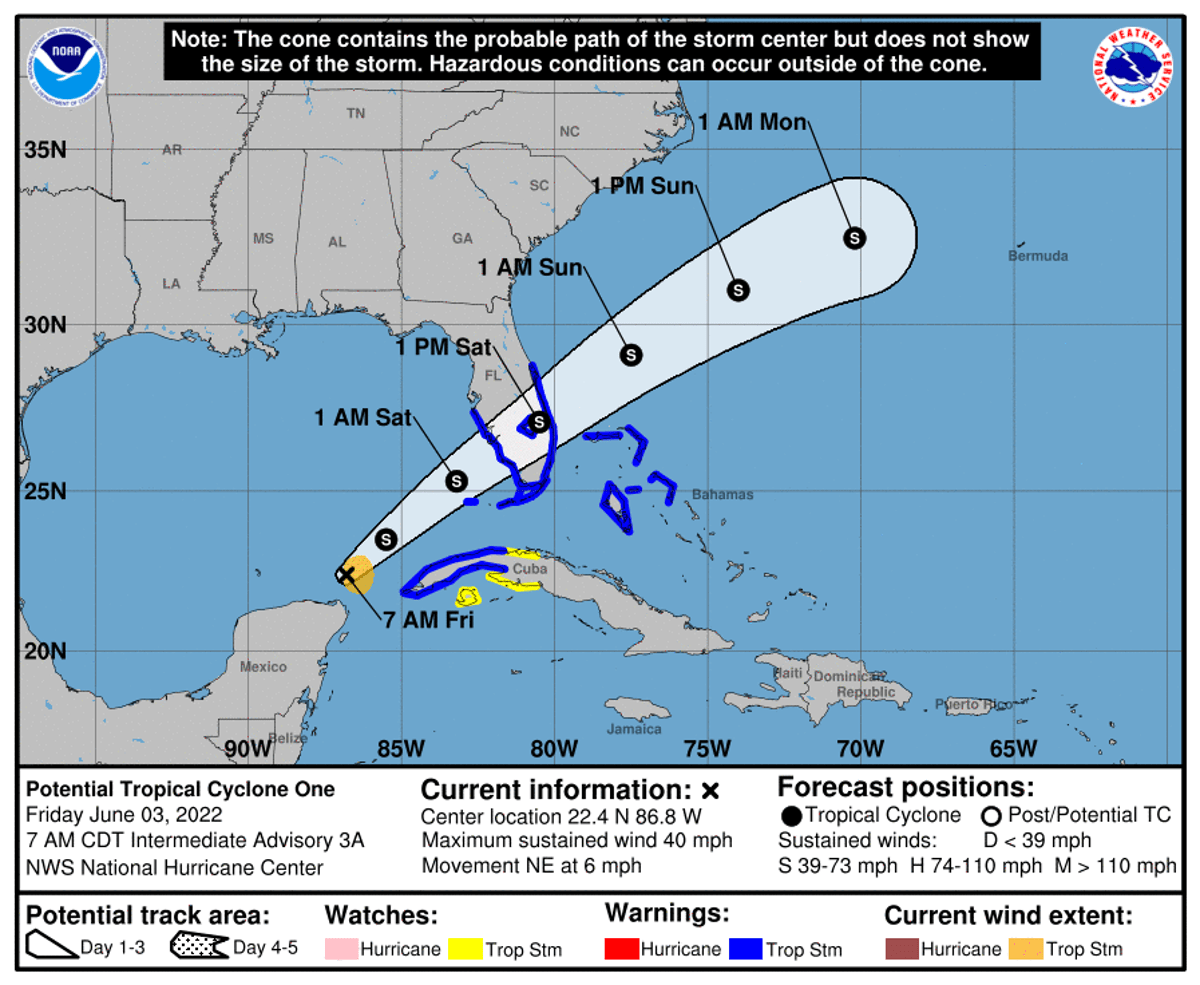Tropical storm warning issued in Florida, Bahamas, Cuba as remains of Agatha strengthen over Gulf

A tropical storm warning has been issued for southern Florida, as well as parts of the Bahamas and Cuba as what remains of Hurricane Agatha lumbers over the Caribbean and Gulf of Mexico.
The US National Hurricane Center (NHC) expects the storm to hit Florida’s west coast sometime on Saturday before sweeping across the southern end of the state.
They give the storm a 90 per cent chance of forming a cyclone within the next couple days, likely sometime overnight.
Much of southern Florida is forecasted to get between four and eight inches of rain. The southern end of the state could also see flash flooding, according to the NHC.
Storm surges along Florida’s Gulf Coast could reach one to two feet.
Right now, the system is being called “Potential Tropical Cyclone One” — but if it reaches tropical storm status, with winds over 39 miles per hour (63 kph) — it would be named Tropical Storm Alex.
This would be the first named storm of the 2022 Atlantic hurricane season, which officially began this week.
Potential for major flooding continues to be the main concern across South Florida as Potential Tropical Cyclone One approaches the region. For the latest potential impacts for South Florida, visit our tropical portal at: https://t.co/1qqyQVfGdy #flwx pic.twitter.com/qT26UyTeaT
— NWS Miami (@NWSMiami) June 3, 2022
Hurricane Agatha killed at least 11 people, with over 30 more missing, as it swept over Mexico. As the storm passed over the Yucatan peninsula and into the Caribbean and Gulf of Mexico, meteorologists warned that may restrengthen before hitting the US.
The US National Oceanic and Atmospheric Administration has predicted another intense hurricane season in the Atlantic this year, with up to 21 named storms. Normally, there are around 14 named storms per year.
The agency puts the blame in part on ongoing La Niña conditions in the Pacific, which can lead to more intense Atlantic hurricane seasons, as well as warm surface water temperatures in the Atlantic and Caribbean.
Scientists warn that the climate crisis is likely to make hurricanes both stronger and more frequent.
Researchers have also been able to show connections between the intensity of specific storms, like Hurricane Harvey, which pummelled Texas in 2017, and the climate crisis.

